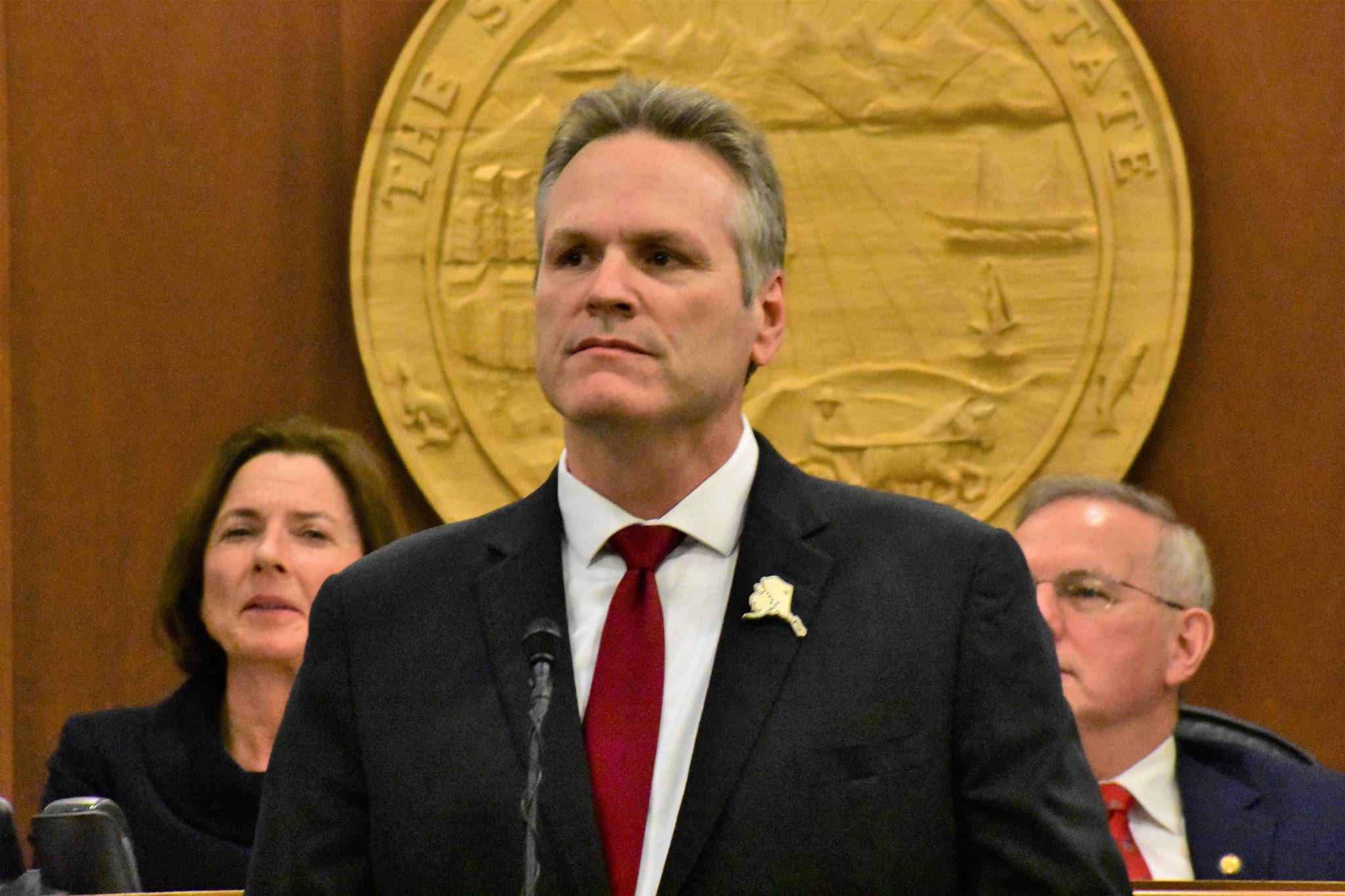Gov. Mike Dunleavy peppered his State of the State address with numbers that paint a bright picture of Alaska’s present and future.
He highlighted an all-time low unemployment rate, wage increases and the amount of money included in last year’s budget for programs that help homeless people and more.
[State of the State analysis: Gov wants lottery, touts timber but omits PFD formula]
The numbers cited were accurate but were often part of broader trends that undercut their positive presentation.
The Empire looked for context for five statistics from the State of the State.
Here’s what was found.
The stat: The unemployment rate is the lowest it’s been in the state’s history.
The context: Department of Labor and Workforce Development data support the notion unemployment in the state is at an all-time low — at least by fractions of a percentage point.
Seasonally adjusted labor force data indicate 2019 wrapped up with five of the lowest monthly unemployment rates ever recorded in Alaska.
Unemployment rates of 6.1 % for December and November 2019 are lower than any other rates included in records that date back to 1976. The prior low mark of 6.2% was recorded in August, September and October of 2019.
Previously, the lowest monthly figure in the Department of Labor’s data was 6.3%, which had been recorded 25 times prior to 2019 — in 2007, 2001, 2000, 1999 and 1998.
But while the unemployment rate is low for the state, it would be astronomical anywhere else.
The national unemployment rate is 3.5%, according to U.S. Bureau of Labor Statistics.
Alaska’s December unemployment rate trails every other state and the District of Columbia, according to BLS.
The stat: Alaska’s wages are at a 10-year high.
The context: Mean wages in Alaska are rising at a greater rate than the national average and have been for years, according to the U.S. Bureau of Labor Statistics. The mean wage in Alaska rose by 1.3% from 2017 to 2018, the most recent year on file, to $58,710. The mean wage also rose 0.7% in each of the previous two years in Alaska. That compares to 0.1% and $51,960 for the U.S. as a whole in 2018. The U.S. mean wage also increased by 0.1% in both the May 2017 and 2016 estimates.
However, growth in Alaska’s median hourly wage, which is less influenced by high-earning outliers than mean hourly wage, has been less substantial than in the rest of the country.
In Alaska, estimates put mean hourly wage at $23.09 in 2018, $22.86 in 2017 and $22.68 in May 2016, according the BLS. That’s a 41-cent — 1.8% — increase over three years. The national figures for the same years are $18.58, $18.12 and $17.81. That’s a 77-cent — almost 4.4 % — increase.
The stat: Alaska added nearly 2,000 jobs in the past year.
The context: The state added about 1,600 jobs in 2019, according to Alaska Economic Trends’ 2020 Jobs Forecast. That growth is anticipated to continue at a slower rate in 2020 to the tune of about 1,100 new jobs, according to the forecast.
However, the added jobs come with a major caveat. Alaska recently lost more than 11,000 jobs from 2016 -2018, according to the Department of Labor.
The stat: Last year’s budget included $43 million in funding to various programs to address homelessness.
The context: Line-item vetoes unveiled in late June cut $11.7 million from mental health capital projects. That included $7.2 million from the homeless assistance program run by the Alaska Housing Finance Corp. and $2 million from AHFC’s special-needs housing program. Additionally, community initiative matching grants which help support Juneau’s homeless shelter and soup kitchen were eliminated in the vetoes. That briefly caused a break in usual services at the Glory Hall. A capital budget that restored most of the funding cut by the vetoes later meant the return of daytime room hours and breakfast.
[Homeless shelter day room closes for week]
The stats: Alaska’s gross domestic product has grown every quarter since Dunleavy took office. The third quarter of 2019’s 2.4% growth makes Alaska one of the fastest-growing state economies in the nation.
The context: Dunleavy took office in December 2018, and the state’s GDP has been on the rise every quarter since then, according to the Bureau of Economic Analysis. But it was also on the rise before then, too.
In some cases, the growth was slower than it has been during Dunleavy’s time in the governor’s mansion, but other quarters from the year prior to his election are typical of what’s been seen over the most recent year.
In the third quarter of 2018, the growth rate was 1%, 3.7 % in the second quarter of 2018, 1% in the first quarter of 2018 and 3.1 % in the fourth quarter of 2017, according to BEA reports.
The last three quarters were even stronger than the one cited by Dunleavy and put Alaska more comfortably in the upper ranges of the BEA’s quarterly reports. In the second quarter of 2019, Alaska’s GDP rose by 4.1 %, 3.9 % in the first quarter of 2019 and 4.9 % in the fourth quarter of 2018.
In the third quarter 2019 report, Alaska in the upper-most fifth for growth by GDP but just barely.
The second highest quintile in the report ends at 2.4%, so Alaska was essentially on the bubble for what would qualify as one of the fastest-growing state economies.
Washington, Idaho, Utah, New Mexico, Colorado, Louisiana, Arkansas and Texas all had higher growth rates than Alaska, according to the BEA. Texas led the nation with a 4% growth rate.
• Contact reporter Ben Hohenstatt at (907)523-2243 or bhohenstatt@juneauempire.com. Follow him on Twitter at @BenHohenstatt

